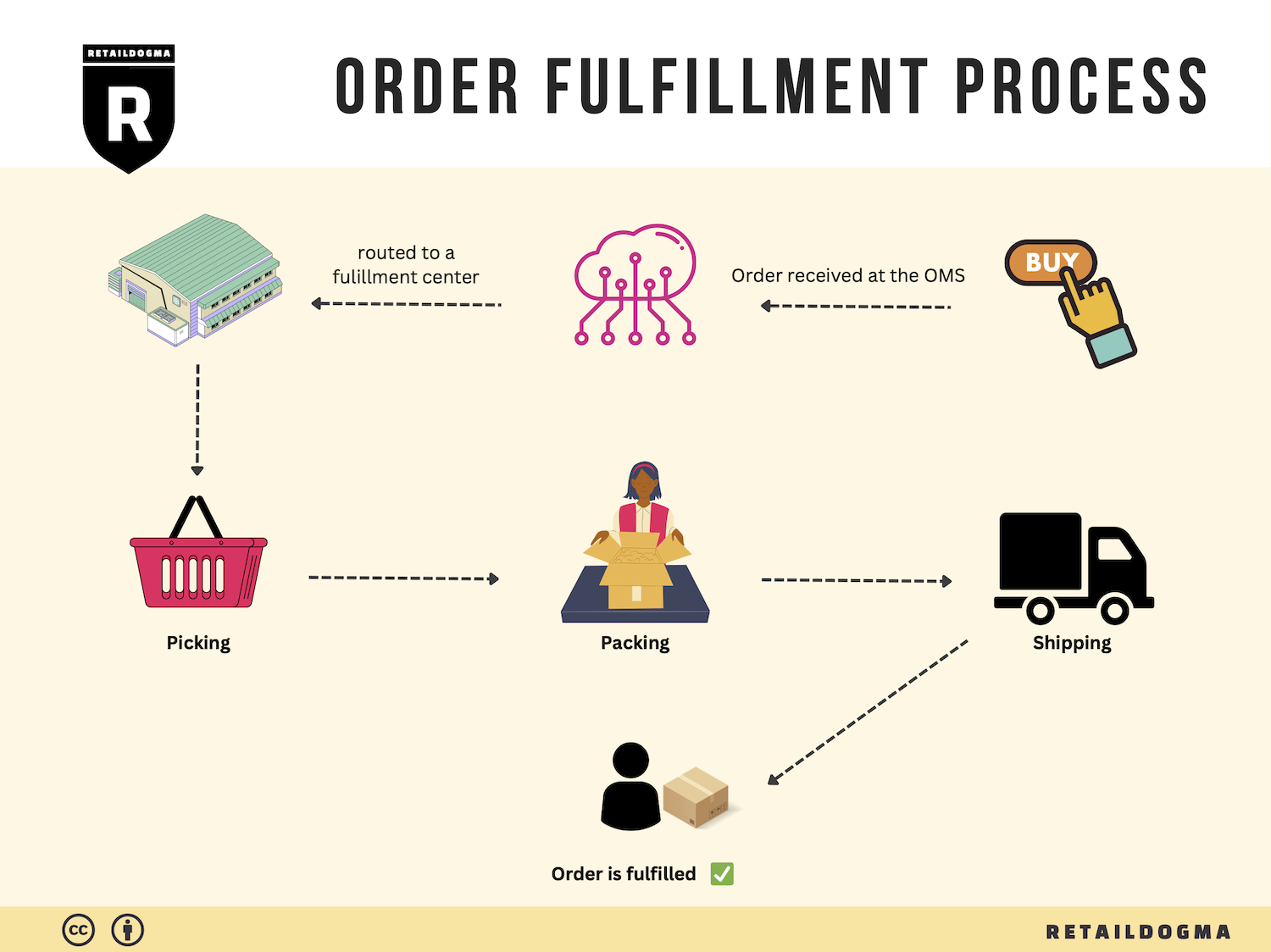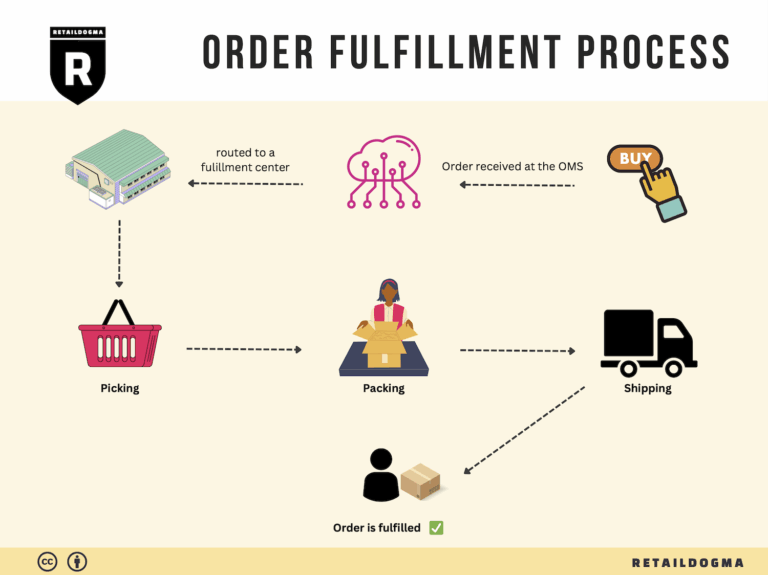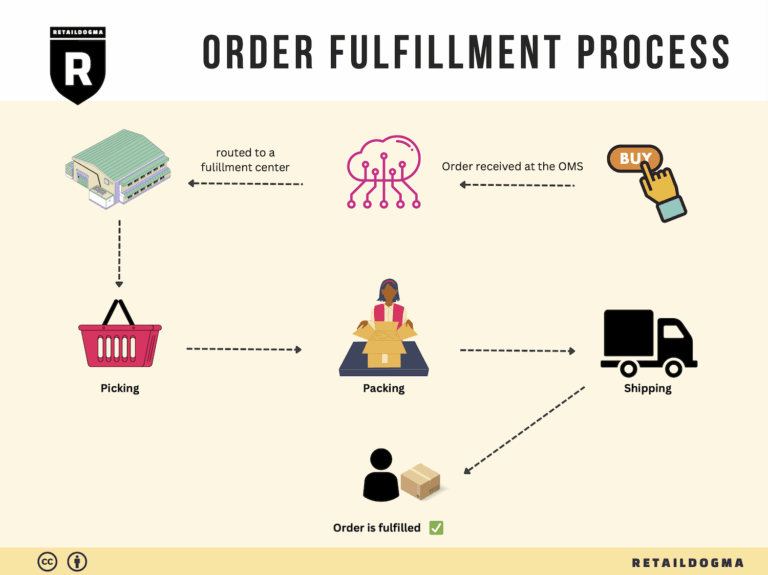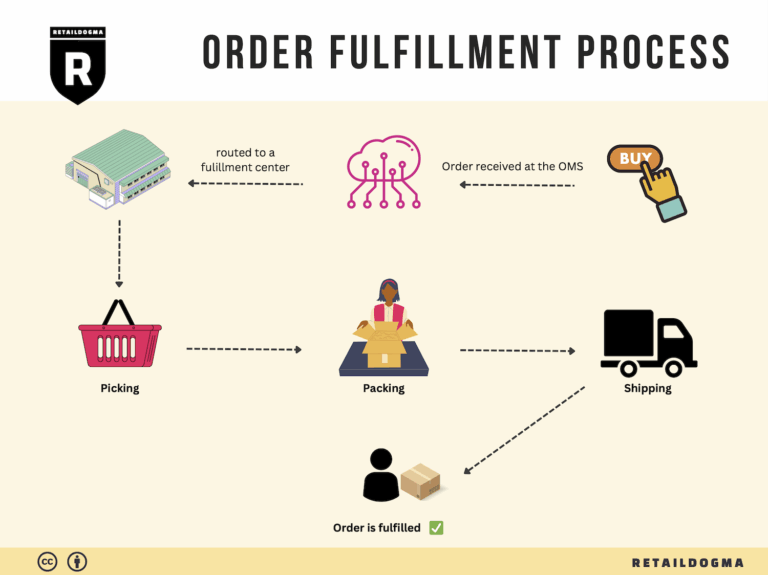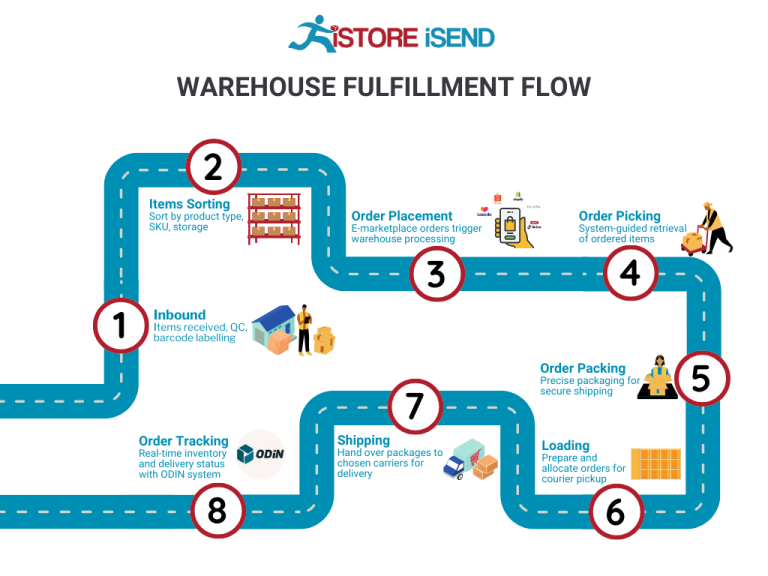What Is A Fulfillment Center? A Complete Guide (2025)
What is E-commerce Fulfillment? An Introduction for Growing Businesses
Understanding the Fulfillment Process
As an e-commerce business owner, you may find yourself grappling with a common challenge: the overwhelming task of packing and shipping orders efficiently. When sales begin to scale, the complexity of fulfilling orders can become a significant pain point. This is where the concept of fulfillment comes into play. Simply put, fulfillment is the process of getting a product from your warehouse or supplier to the hands of the customer. This process encompasses everything from inventory management and order processing to shipping and delivery.
In today’s fast-paced e-commerce landscape, effective fulfillment is not just a logistical necessity; it’s a critical component of customer satisfaction and business growth. With customers expecting faster delivery times and seamless shopping experiences, understanding how to streamline your fulfillment operations can significantly impact your bottom line.
This guide will explore the various models of e-commerce fulfillment available to growing businesses, including Third-Party Logistics (3PL) and Fulfillment by Amazon (FBA). Each model offers unique advantages and challenges, which we will break down to help you identify the best fit for your business.
We will also delve into the core services typically offered by fulfillment partners, such as inventory receiving, order picking, packing, and shipping. Understanding these services will enable you to make informed decisions about which capabilities are essential for your operations and how they align with your business goals.
Choosing the right fulfillment partner is another crucial aspect we will cover. With numerous options in the market, it’s vital to evaluate potential partners based on factors like technology integration, scalability, customer service, and pricing. We will provide practical tips on how to assess these elements to ensure a successful partnership.
Lastly, we will examine pricing structures associated with different fulfillment solutions. Knowing the costs involved will empower you to budget effectively and optimize your logistics strategy without compromising on service quality.
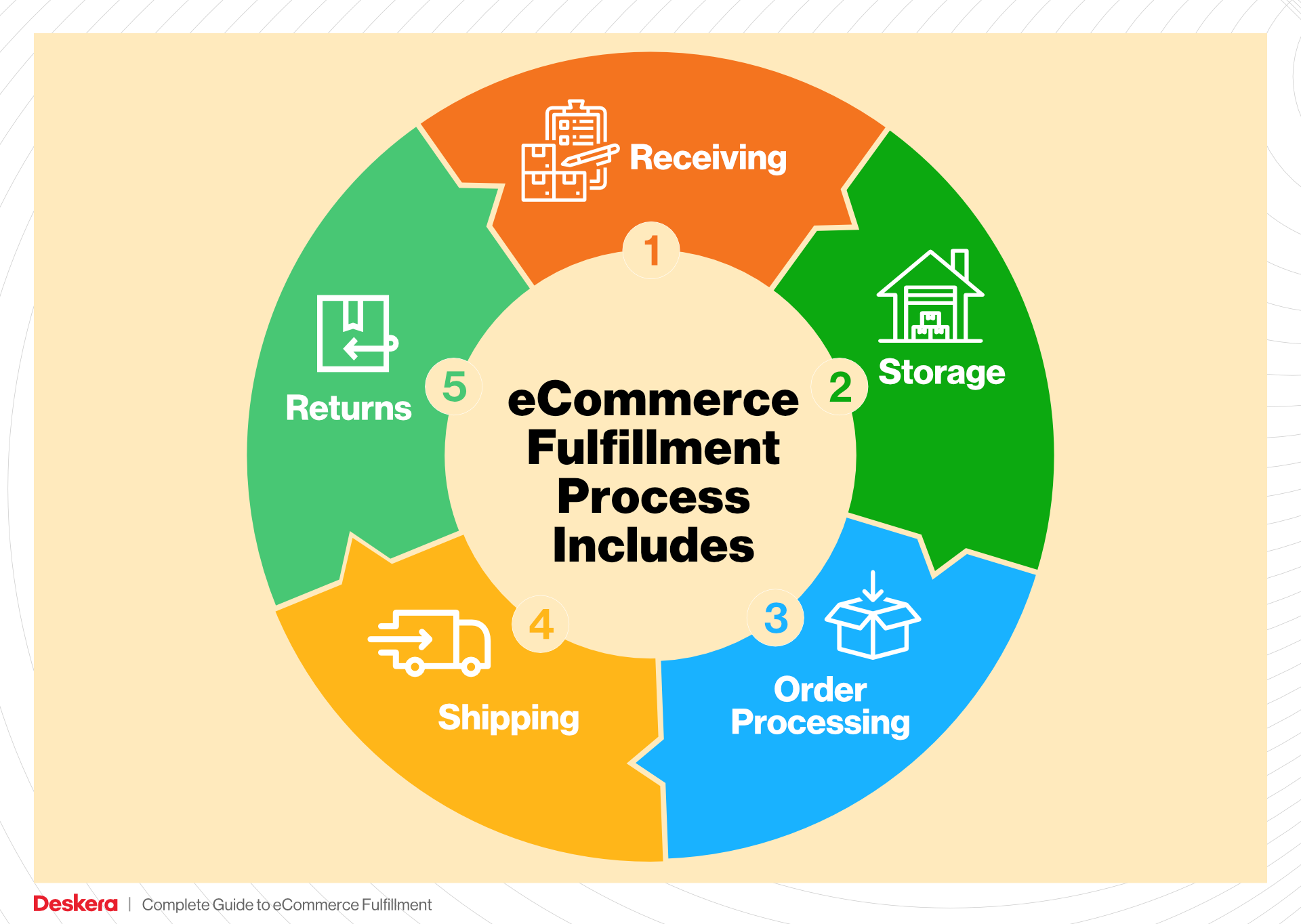
The goal of this guide is to equip you with the knowledge and insights needed to make smart, strategic decisions about your e-commerce logistics. By understanding the fulfillment landscape, you can enhance operational efficiency, improve customer satisfaction, and ultimately scale your business successfully.
What You’ll Learn In This Guide
- What is E-commerce Fulfillment? An Introduction for Growing Businesses
- The Order Fulfillment Process: From ‘Buy’ Button to Customer’s Door
- Comparing Fulfillment Models: In-House vs. 3PL vs. Dropshipping
- A Deep Dive into Amazon FBA: Pros, Cons, and Who It’s For
- Core Services Offered by Fulfillment Centers
- How to Choose a Fulfillment Partner: A 6-Point Checklist
- Understanding Fulfillment Pricing: A Breakdown of Common Fees
- Frequently Asked Questions (FAQs) about Fulfillment
- Conclusion: Is Outsourcing Fulfillment the Right Move for Your Business?
- Important Disclaimer
The Order Fulfillment Process: From ‘Buy’ Button to Customer’s Door
1. Receiving Inventory
The first step in the order fulfillment process is the receiving of inventory. This involves the delivery of products to the fulfillment center, where they are logged into the system. Upon arrival, items are checked for accuracy against the shipping documents, ensuring that the correct quantities and types of products have been delivered. This process often utilizes SKU (Stock Keeping Unit) codes to facilitate tracking and management of inventory.
Importance: Proper inventory receiving is crucial for maintaining accurate stock levels and preventing discrepancies that can lead to fulfillment errors. Accurate receiving helps to establish a reliable inventory database, ensuring that products are available for customers when needed.
2. Warehouse Storage
Once the inventory is received, the next phase is warehouse storage. In this step, products are organized and stored within the fulfillment center. Items are often categorized based on type, size, or frequency of sale, and are placed in designated areas that can be easily accessed by fulfillment staff. Advanced inventory management systems track the location of each item, typically through barcode scanning.
Importance: Effective storage solutions optimize space and facilitate quick access to products. By organizing items strategically, fulfillment centers can improve the speed of order picking and reduce the time taken to locate products. This organization is essential for maintaining operational efficiency and meeting customer expectations for fast shipping.
3. Order Picking
The third step involves order picking, where items are retrieved from storage based on customer orders. When a customer places an order, a pick list is generated, detailing the items required for that order. Fulfillment associates or automated systems then locate these items within the warehouse, often using technology like robots or conveyor systems to streamline the process.
Importance: Order picking is a critical part of fulfillment, as the accuracy of this step directly impacts customer satisfaction. Errors during picking can lead to incorrect shipments, resulting in returns and unhappy customers. Efficient picking processes help minimize errors and speed up the overall fulfillment time.
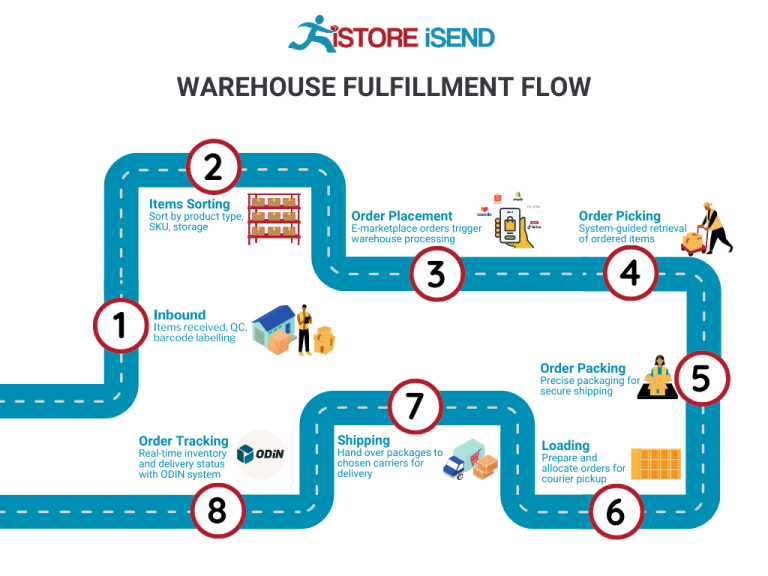
4. Order Packing
After items are picked, the next step is order packing. This involves assembling the ordered items into a suitable package for shipping. During this stage, associates verify the contents against the order to ensure accuracy before packing. Fulfillment centers often utilize technology to recommend the optimal box size and packing materials, which helps to reduce waste and protect products during transit.
Importance: Proper packing is vital for ensuring that items arrive at the customer’s location in excellent condition. Well-packed orders reduce the likelihood of damage during shipping and enhance the overall customer experience. This step also includes labeling packages with necessary shipping information, ensuring that orders are routed correctly.
5. Shipping & Delivery
The final step in the order fulfillment process is shipping and delivery. Once the orders are packed, they are sorted based on their shipping destinations and delivery methods. Fulfillment centers use systems like SLAM (Scan, Label, Apply, Manifest) machines to efficiently label packages and prepare them for dispatch. Depending on the service level selected by the customer, packages may be sent via standard shipping, expedited delivery, or even same-day delivery options.
Importance: The shipping and delivery phase is where customer expectations are most directly met. Timely and accurate delivery is essential for customer satisfaction and retention. This stage also involves tracking shipments, providing customers with updates, and managing any potential issues that may arise during transit.
In conclusion, understanding each step of the order fulfillment process—from receiving inventory to shipping and delivery—is essential for e-commerce business owners and operations managers. By optimizing these stages, businesses can enhance efficiency, reduce costs, and ultimately improve customer satisfaction.
Comparing Fulfillment Models: In-House vs. 3PL vs. Dropshipping
Fulfillment Model Comparison
| Model | Who Handles Inventory | Best For (Business Stage) | Key Advantage | Key Disadvantage |
|---|---|---|---|---|
| In-House Fulfillment | Business itself | Established businesses | Greater control over inventory and fulfillment | High overhead costs and resource requirements |
| Third-Party Logistics (3PL) | Third-party provider | Growing businesses | Scalability and cost-efficiency | Less control over inventory and fulfillment process |
| Dropshipping | Supplier/Manufacturer | Startups and small businesses | Low initial investment and no inventory risk | Lower profit margins and reliance on supplier reliability |
In-House Fulfillment
In-house fulfillment involves managing the entire order fulfillment process within the business’s own facilities. This model is most suitable for established businesses that have sufficient resources to handle inventory management, order processing, and shipping. The key advantage of in-house fulfillment is the level of control it provides over inventory, shipping times, and customer service. Businesses can customize their fulfillment processes to align closely with their brand values and customer expectations. However, this model also comes with significant disadvantages. High overhead costs associated with warehousing, staffing, and technology can strain resources, particularly for smaller businesses. Additionally, the complexity of managing logistics can divert attention from core business activities, such as product development and marketing, thereby hindering growth.
Third-Party Logistics (3PL)
Third-party logistics (3PL) providers take over the logistics and fulfillment processes for businesses. This model is ideal for growing businesses that need to scale their operations without the burden of managing logistics in-house. With 3PL, companies can leverage the expertise and infrastructure of logistics specialists, allowing them to focus on their core competencies. The key advantage of using a 3PL provider is scalability; as sales increase, businesses can easily adjust their logistics needs without significant capital investment. However, this model also has its downsides. Companies may experience a lack of control over their inventory and the fulfillment process, which can lead to inconsistencies in service quality. Additionally, 3PL providers often charge fees based on volume and service levels, which can accumulate and impact profit margins if not carefully managed.
Dropshipping
Dropshipping is a fulfillment model where the retailer does not keep products in stock. Instead, when a retailer sells a product, they purchase the item from a third-party supplier who then ships it directly to the customer. This model is especially beneficial for startups and small businesses, as it requires minimal upfront investment and eliminates the need for inventory management. The primary advantage of dropshipping is the low financial risk; retailers only pay for goods after they have made a sale, allowing them to test product viability without significant capital commitment. However, dropshipping comes with notable disadvantages. Profit margins are typically lower compared to other models due to wholesale pricing, and businesses are heavily reliant on suppliers for inventory management and shipping. This reliance can lead to delays and inconsistencies, which may affect customer satisfaction and brand reputation.
Conclusion
Choosing the right fulfillment model is crucial for the success and scalability of an e-commerce business. Each model has its unique strengths and weaknesses, and the best choice will depend on the specific needs, resources, and growth stage of the business. Established businesses may benefit from the control of in-house fulfillment, while growing companies might find the scalability of 3PL more advantageous. Meanwhile, startups can leverage the low-risk nature of dropshipping to enter the market. Ultimately, understanding these models will enable e-commerce entrepreneurs to make informed decisions that align with their strategic goals and operational capabilities.
A Deep Dive into Amazon FBA: Pros, Cons, and Who It’s For
Understanding Fulfillment by Amazon (FBA)
Fulfillment by Amazon (FBA) is a service that allows e-commerce sellers to leverage Amazon’s extensive logistics network to store, pack, and ship their products. This service enables sellers to focus on growing their business while Amazon handles the logistics of order fulfillment. By using FBA, sellers can send their inventory to Amazon’s fulfillment centers, where Amazon takes care of the entire order processing flow—from inventory storage to shipping and customer service.
How FBA Works
-
Inventory Preparation and Shipping: Sellers prepare their products according to Amazon’s guidelines and ship them to one or more of Amazon’s fulfillment centers. This involves labeling products correctly and ensuring they meet Amazon’s packaging standards.
-
Storage: Once the products arrive at the fulfillment center, they are stored until an order is placed. Amazon uses advanced inventory management systems to track stock levels and locations.
-
Order Processing: When a customer places an order for a product fulfilled by Amazon, the fulfillment center receives the order automatically. The system generates a picking list that directs warehouse staff (or robots) to retrieve the correct items.
-
Packing and Shipping: After picking, items are packed using Amazon’s optimized packing systems, which help minimize waste and ensure that items are protected during transit. The packed orders are then labeled and shipped to the customer. Amazon handles all shipping logistics, including managing relationships with carriers.
-
Customer Service: FBA also includes customer service and returns management. Amazon’s customer service team handles inquiries and issues related to orders fulfilled through FBA, allowing sellers to focus on other aspects of their business.
Pros of Fulfillment by Amazon (FBA)
-
Prime Eligibility: One of the most significant advantages of FBA is that products become eligible for Amazon Prime. This can significantly increase sales, as Prime members are often more likely to purchase items that come with faster shipping options.
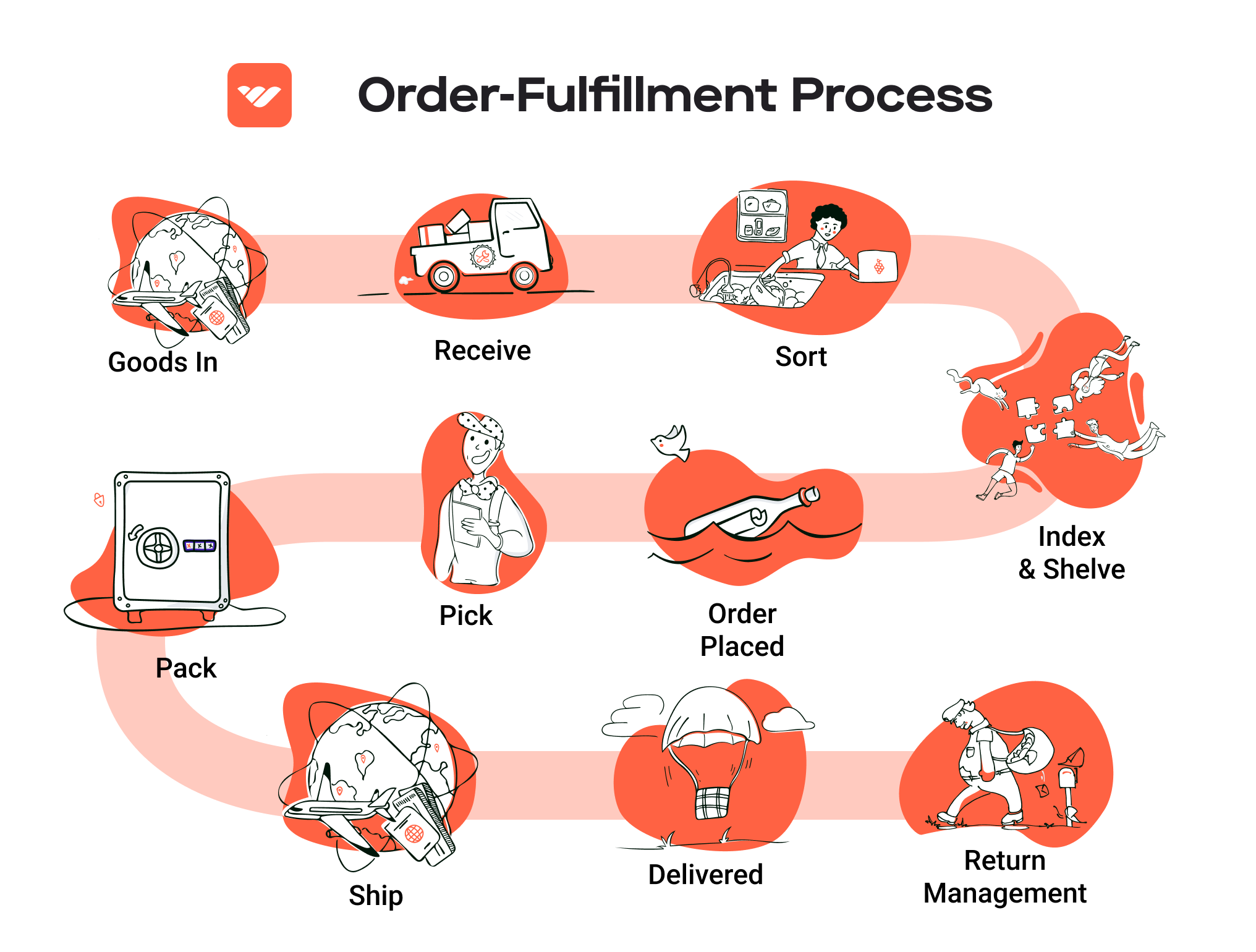
-
Customer Trust: Selling through FBA can enhance customer trust. Amazon is known for its reliable shipping and customer service, and using FBA can help sellers benefit from this reputation, making customers more likely to purchase from them.
-
Multi-Channel Fulfillment: FBA allows sellers to fulfill orders from multiple sales channels, not just Amazon. This means that if a seller operates an independent website or sells through other platforms, they can still use Amazon’s fulfillment services to manage their logistics.
-
Scalability: FBA provides a scalable solution for growing businesses. Sellers can easily increase their inventory and sales volume without needing to invest heavily in their own warehousing and logistics capabilities.
-
Advanced Technology: Amazon employs sophisticated technology and automation in its fulfillment centers, leading to quick processing times and improved accuracy in order fulfillment.
Cons of Fulfillment by Amazon (FBA)
-
High Fees: FBA comes with various fees, including storage fees for the inventory stored in Amazon’s warehouses and fulfillment fees for each order processed. These costs can add up quickly, especially for sellers with lower margins.
-
Strict Inventory Rules: Amazon has stringent guidelines and policies regarding inventory management. Sellers must adhere to these rules to avoid penalties, which can be challenging for those new to the platform.
-
Commingling Risks: When using FBA, sellers’ products may be commingled with those of other sellers. This means that if a customer receives a defective or damaged item from a third-party seller, it could negatively impact the original seller’s reputation and feedback ratings.
-
Loss of Control: By outsourcing fulfillment to Amazon, sellers may feel a loss of control over the shipping process and customer experience. Any issues that arise during fulfillment can reflect poorly on the seller, even if they are not directly responsible.
-
Inventory Limitations: Amazon imposes limits on the amount of inventory sellers can store in their fulfillment centers, especially during peak seasons. This can hinder sellers from maximizing their sales potential during high-demand periods.
Who is FBA Best For?
Fulfillment by Amazon is an excellent option for a variety of sellers, particularly those who meet the following criteria:
-
Small to Medium-Sized Businesses: Sellers looking to scale their operations without investing heavily in logistics infrastructure can benefit from FBA’s comprehensive fulfillment services.
-
E-commerce Entrepreneurs: New sellers or those with limited experience in logistics can utilize FBA to simplify their operations and focus on marketing and sales.
-
Businesses with High Sales Volume: Companies that anticipate high sales volumes, especially during peak seasons, can leverage FBA’s capabilities to manage increased order fulfillment demands effectively.
-
Sellers of Unique or Niche Products: Those who offer unique products that may benefit from Amazon’s vast customer base and Prime eligibility will find FBA particularly advantageous.
In conclusion, while Fulfillment by Amazon offers a wealth of benefits, including access to Amazon’s customer base and logistics capabilities, it also comes with challenges such as fees and strict policies. By weighing these pros and cons, e-commerce business owners can make an informed decision about whether FBA aligns with their growth strategy and operational needs.
Core Services Offered by Fulfillment Centers
Inventory Management & Warehousing
Inventory management and warehousing are foundational services provided by fulfillment centers. This service entails receiving, storing, and tracking products within a warehouse environment. Fulfillment centers utilize sophisticated inventory management systems that leverage barcode scanning and real-time data tracking to maintain precise records of stock levels, locations, and movements.
Benefits for E-commerce Businesses:
1. Optimized Space Utilization: Fulfillment centers are designed to maximize storage efficiency, allowing businesses to store a larger quantity of inventory without the overhead of managing a dedicated warehouse. This is particularly beneficial for small to mid-sized e-commerce businesses that may not have the resources to maintain their own facilities.
-
Reduced Costs: By outsourcing inventory management, businesses can save on costs associated with leasing, staffing, and maintaining a warehouse. Fulfillment centers provide scalable solutions that grow with your business, eliminating the need for significant upfront investments in infrastructure.
-
Accurate Inventory Tracking: Real-time inventory management reduces the risks of stockouts or overstock situations. E-commerce businesses can make informed decisions regarding reordering and inventory turnover, ultimately improving cash flow and customer satisfaction.
Pick and Pack Services
Pick and pack services are critical to the order fulfillment process. This service involves selecting items from the warehouse based on customer orders (picking) and then packaging them appropriately for shipment (packing). Fulfillment centers employ streamlined processes, often enhanced by automation, to ensure accuracy and efficiency during these stages.
Benefits for E-commerce Businesses:
1. Speed and Efficiency: Fulfillment centers are equipped with optimized picking systems, including mobile technology and automation, which significantly speed up the order processing time. This is essential for e-commerce businesses that compete on delivery speed, especially with consumer expectations for quick shipping.
-
Accuracy in Order Fulfillment: Errors in order fulfillment can lead to customer dissatisfaction and increased return rates. Fulfillment centers implement quality control measures to ensure that the correct items are picked and packed, reducing the likelihood of mistakes.
-
Flexible Packing Solutions: Fulfillment centers can accommodate various packing needs, including different box sizes and packing materials. They use systems that recommend the right packaging to minimize waste and ensure items are well-protected during shipping, thus reducing damage claims and returns.
Kitting and Assembly
Kitting and assembly services involve combining multiple products into a single package or kit before shipping. This can include assembling items that need to be put together or bundling related products for promotional offers. Fulfillment centers often provide these services to meet specific business needs.
Benefits for E-commerce Businesses:
1. Increased Sales Opportunities: Kitting allows businesses to create attractive product bundles, which can lead to higher average order values. By offering bundled products at a slight discount, e-commerce businesses can entice customers to purchase more than they originally intended.
-
Streamlined Operations: Outsourcing kitting and assembly reduces the burden on e-commerce businesses to handle these labor-intensive tasks in-house. This allows companies to focus on core activities such as marketing and customer engagement while leaving the logistics to fulfillment experts.
-
Customization and Personalization: Many fulfillment centers offer customizable kitting options, enabling businesses to tailor their products to specific customer segments or seasonal promotions. This flexibility can enhance the customer experience and improve brand loyalty.
Returns Management (Reverse Logistics)
Returns management, or reverse logistics, is a crucial service offered by fulfillment centers that involves handling product returns efficiently. This service includes processing returned items, assessing their condition, restocking or refurbishing them, and managing the overall return flow.
Benefits for E-commerce Businesses:
1. Enhanced Customer Experience: Efficient returns processing is vital for customer satisfaction. Fulfillment centers can manage returns quickly, ensuring that customers receive prompt refunds or exchanges, which encourages repeat business and builds trust in your brand.
-
Cost-Effective Returns Processing: Handling returns in-house can be costly and time-consuming. Fulfillment centers have established procedures to manage returns efficiently, minimizing the operational impact on your business and reducing associated costs.
-
Data Insights for Improvement: Fulfillment centers can provide valuable insights into return reasons and trends, enabling e-commerce businesses to identify issues with products or shipping processes. This data can inform product development and inventory management strategies, ultimately leading to reduced return rates and improved profitability.
In conclusion, leveraging the core services offered by fulfillment centers can significantly enhance the operational efficiency and scalability of e-commerce businesses. By outsourcing inventory management, pick and pack services, kitting, and returns management, business owners can focus on growth while ensuring a seamless fulfillment process for their customers.
How to Choose a Fulfillment Partner: A 6-Point Checklist
Location & Warehouse Network
Importance: The geographic location of your fulfillment partner’s warehouses can significantly impact shipping costs and delivery times. Having warehouses located strategically near your customer base helps in reducing transit times and costs, which can enhance customer satisfaction and potentially increase repeat business.
Questions to Ask:
– Where are your warehouses located, and how does this align with my target market?
– What is your average shipping time to key locations?
– Do you have plans to expand your warehouse network, and if so, where?
Technology & Integrations
Importance: The technology used by a fulfillment partner plays a critical role in the efficiency and accuracy of order processing. A robust technology platform can provide real-time inventory tracking, automated order processing, and seamless integration with your e-commerce platforms, which is essential for scaling operations.
Questions to Ask:
– What inventory management systems do you use, and how do they integrate with my e-commerce platform?
– Can you provide real-time tracking and reporting on order status?
– How do you handle data security and privacy concerns?
Specializations (e.g., cold storage, oversized items)
Importance: Depending on your product range, your fulfillment partner may need to have specific capabilities. For example, if you sell perishable goods, a partner with cold storage facilities is essential. Similarly, if your products are oversized or require special handling, ensure your partner can accommodate these needs.
Questions to Ask:
– Do you have specialized facilities for handling specific product types, such as temperature-sensitive items or large products?
– What are your capabilities in terms of packaging and shipping for these specialized items?
– How do you manage the storage and handling of products that require special conditions?
Scalability & Capacity
Importance: As your business grows, your fulfillment partner must be able to scale operations accordingly. A partner with the capacity to handle increased order volumes without sacrificing service quality is vital for long-term success.
Questions to Ask:
– What is your current capacity for order fulfillment, and how do you handle peak seasons or unexpected surges in demand?
– How quickly can you scale operations if my order volume increases significantly?
– Are there any limits on the amount of inventory I can store with you?
Pricing and Contracts
Importance: Understanding the pricing structure and contract terms is crucial for maintaining profitability. Hidden fees or unfavorable contract terms can erode your margins, so clarity in pricing is essential.
Questions to Ask:
– What is your pricing model (e.g., per order, per item, flat fee), and are there any additional fees I should be aware of?
– Can you provide a breakdown of all costs associated with your services?
– What are the terms of the contract, and are there any penalties for early termination?
Customer Support & Reviews
Importance: Quality customer support can make a significant difference in your fulfillment experience. A partner that is responsive and proactive can help resolve issues quickly, minimizing disruptions to your operations. Additionally, checking reviews and testimonials can provide insights into the partner’s reliability and service quality.
Questions to Ask:
– What customer support options do you provide (e.g., phone, email, chat), and what are your hours of operation?
– How do you handle customer inquiries or issues related to order fulfillment?
– Can you provide references or case studies from current clients that demonstrate your service quality?
Conclusion
Choosing the right fulfillment partner is a crucial decision for any e-commerce business looking to scale. By evaluating potential partners against this checklist, you can ensure that you select a fulfillment provider that meets your operational needs and aligns with your business goals. Taking the time to ask the right questions and assess capabilities will help you build a strong foundation for your logistics and customer satisfaction efforts.
Understanding Fulfillment Pricing: A Breakdown of Common Fees
Initial Setup Fees
Initial setup fees are often the first expense incurred when partnering with a fulfillment service, such as Amazon’s Fulfillment by Amazon (FBA) program. These fees typically cover the costs associated with establishing your account, onboarding, and integrating your inventory management system with the fulfillment center.
The calculation of initial setup fees can vary widely depending on the provider and the complexity of your setup. For example, some fulfillment centers may charge a flat fee, while others might base their charges on the number of SKUs (stock keeping units) you intend to manage. It’s crucial for businesses to clarify what is included in these fees—such as training, software access, and any necessary hardware—before committing.
Receiving Fees
Receiving fees are charged when your inventory arrives at the fulfillment center. These fees cover the labor and resources required to unload, inspect, and store your goods. Typically, receiving fees are calculated based on the volume of inventory processed, which can be measured in terms of weight, number of pallets, or total items.
For example, a fulfillment center may charge a fee per pallet received or a fee per item, which could be structured as a tiered pricing model. Understanding how receiving fees are calculated is essential, as they can significantly affect your overall fulfillment costs, especially if you plan to send large shipments frequently.
Storage Fees (per pallet/bin)
Storage fees are recurring charges for the space your inventory occupies within the fulfillment center. These fees are usually calculated on a per-pallet or per-bin basis, depending on how your products are stored.
Storage fees are typically assessed monthly, and the rate may vary depending on the time of year; for instance, during peak seasons like the holidays, storage fees may increase due to higher demand for warehouse space. Additionally, some fulfillment centers may implement a tiered pricing structure where the first few pallets are charged at a lower rate, and additional pallets incur higher fees. To optimize costs, businesses should evaluate their inventory turnover rates and plan their storage needs accordingly.
Pick & Pack Fees (per item/order)
Pick and pack fees are charged for the labor involved in retrieving items from storage and preparing them for shipment. This fee structure is usually based on the number of items being picked and packed, with costs varying by the complexity of the order.
For instance, a simple order with one item may incur a lower fee compared to an order that includes multiple items requiring special packing materials or assembly. Some fulfillment centers may also charge additional fees for special handling or packaging requests. To manage these costs effectively, businesses should streamline their product offerings and minimize order complexity where possible.
Shipping Fees
Shipping fees represent one of the most significant costs associated with fulfillment services. These fees depend on several factors, including the weight and dimensions of the package, the shipping method selected, and the destination of the shipment. Fulfillment centers often leverage partnerships with various carriers to offer competitive shipping rates.
Shipping fees can be complex, as they may include both the cost of postage and additional handling fees. Some fulfillment services may provide discounted shipping rates for high-volume shippers or offer flat-rate shipping options. Businesses should assess different shipping strategies, such as using regional distribution centers or optimizing order sizes, to reduce overall shipping costs.
Tips for Getting an Accurate Quote
To obtain an accurate quote for fulfillment services, businesses should take several key steps:
-
Provide Detailed Information: Clearly outline your inventory types, expected order volumes, and any specific handling requirements. The more detailed the information you provide, the more accurate the quote will be.
-
Ask About All Fees: Inquire about any potential hidden fees, such as those related to returns, special handling, or seasonal price increases.
-
Evaluate Multiple Providers: Don’t settle for the first quote. Compare services, pricing models, and customer reviews from multiple fulfillment centers to ensure you’re getting the best value.
-
Consider Long-Term Needs: Think about your business growth and how it will affect fulfillment costs over time. Look for providers that offer scalability and flexibility in their pricing models.
-
Negotiate Terms: Don’t hesitate to negotiate terms and pricing, especially if you expect to ship a high volume of orders. Many fulfillment centers are willing to offer discounts for long-term contracts or bulk shipping arrangements.
By understanding these common fees and their structures, e-commerce business owners can better evaluate their fulfillment options and optimize their logistics strategies for scalability and cost-effectiveness.
Frequently Asked Questions (FAQs) about Fulfillment
1. What is the Amazon Fulfillment Center BOI2?
The Amazon Fulfillment Center BOI2, located in Nampa, Idaho, is a facility where Amazon processes and fulfills customer orders. It plays a crucial role in the logistics chain, handling everything from inventory storage to order packing and shipping, ensuring that products reach customers efficiently.
2. What services does the BOI2 fulfillment center offer?
The BOI2 fulfillment center primarily provides services related to order fulfillment, including receiving inventory, storing products, picking items for orders, packing them securely, and shipping them to customers. Additionally, it manages customer service for orders processed through the Fulfillment by Amazon (FBA) program.
3. How does the Fulfillment by Amazon (FBA) program work?
FBA allows sellers to store their products in Amazon’s fulfillment centers. Once a customer places an order, Amazon takes care of the entire fulfillment process, including picking, packing, and shipping the products. Sellers benefit from Amazon’s logistics infrastructure and customer service support, enhancing their sales potential on the platform.
4. What’s the difference between a warehouse and a fulfillment center?
A warehouse is primarily used for storage, while a fulfillment center is designed for processing customer orders. Fulfillment centers focus on the entire order lifecycle—from receiving inventory to picking, packing, and shipping—whereas warehouses may not engage in these value-added services.
5. How much do fulfillment services cost at BOI2?
Costs for fulfillment services at the BOI2 center depend on various factors, including the volume of inventory, the size and weight of the products, and the specific services utilized (like storage and shipping). It’s recommended to consult directly with Amazon or review their pricing structure for detailed cost insights.
6. What technology does Amazon use in its fulfillment centers?
Amazon employs advanced technology in its fulfillment centers, including automation and robotics for order picking and packing. Systems like barcode scanning and SLAM (scan, label, apply, manifest) machines enhance accuracy and efficiency throughout the fulfillment process.
7. Can I track my inventory at the BOI2 fulfillment center?
Yes, Amazon provides sellers with tools to track their inventory stored in the BOI2 fulfillment center. Through the Seller Central platform, you can monitor inventory levels, order statuses, and shipping information in real-time.
8. What is a 3PL, and how does it relate to fulfillment?
A 3PL, or third-party logistics provider, is a company that offers logistics services to businesses, including warehousing, fulfillment, and shipping. Amazon’s fulfillment centers, including BOI2, can be seen as a 3PL service for sellers using FBA, as they handle the logistics of order fulfillment on behalf of the sellers.
9. How do I get started with using the BOI2 fulfillment center?
To start using the BOI2 fulfillment center, you need to enroll in the Fulfillment by Amazon program. After registration, you can send your products to the fulfillment center, where Amazon will handle the storage, fulfillment, and customer service for your orders.
10. What are the benefits of using the BOI2 fulfillment center for my business?
Utilizing the BOI2 fulfillment center offers several advantages, including access to Amazon’s vast logistics network, reduced shipping times, improved customer service, and the ability to scale your operations without the overhead of managing a warehouse. This can significantly enhance your competitiveness in the e-commerce marketplace.
Conclusion: Is Outsourcing Fulfillment the Right Move for Your Business?
Evaluating the Benefits of Outsourcing Fulfillment
In the fast-paced world of e-commerce, leveraging a fulfillment service can provide significant advantages that are crucial for scaling your business. By outsourcing fulfillment, you can save valuable time and resources, allowing you to focus on core business activities such as marketing and product development. A fulfillment partner like an Amazon Fulfillment Center not only handles the logistics of storing, picking, packing, and shipping your products but also manages customer service, which can enhance customer satisfaction and loyalty.
Scalability is another critical benefit. As your business grows, so do your order volumes and complexity. A robust fulfillment service can adapt to fluctuations in demand, whether during peak seasons or rapid growth phases. This adaptability means you won’t be constrained by your current operational capacity, allowing for seamless scaling without the need for significant investment in infrastructure or personnel.
Expertise is a defining factor in the success of any fulfillment operation. With extensive experience and advanced technologies, fulfillment centers optimize the logistics process, ensuring accuracy and efficiency. This expertise not only reduces errors but also enhances delivery speed—key factors that can set your business apart in a competitive landscape.
However, it’s essential to choose the right fulfillment partner that aligns with your business goals and customer expectations. A misalignment can lead to operational inefficiencies and customer dissatisfaction.
Strategic Call to Action
To determine if outsourcing fulfillment is the right move for your business, conduct a thorough audit of your current shipping process. Evaluate your operational pain points, cost implications, and growth potential. This assessment will guide you in making an informed decision about whether a fulfillment partner is the next strategic step in your business growth journey. Embrace the opportunity to enhance your operational efficiency and customer satisfaction by exploring the fulfillment options available to you today.
Important Disclaimer
⚠️ Important Disclaimer
The information in this guide is for educational purposes. Fulfillment services, pricing, and platform features change frequently. Always conduct your own due diligence and consult with providers directly before making business decisions.
